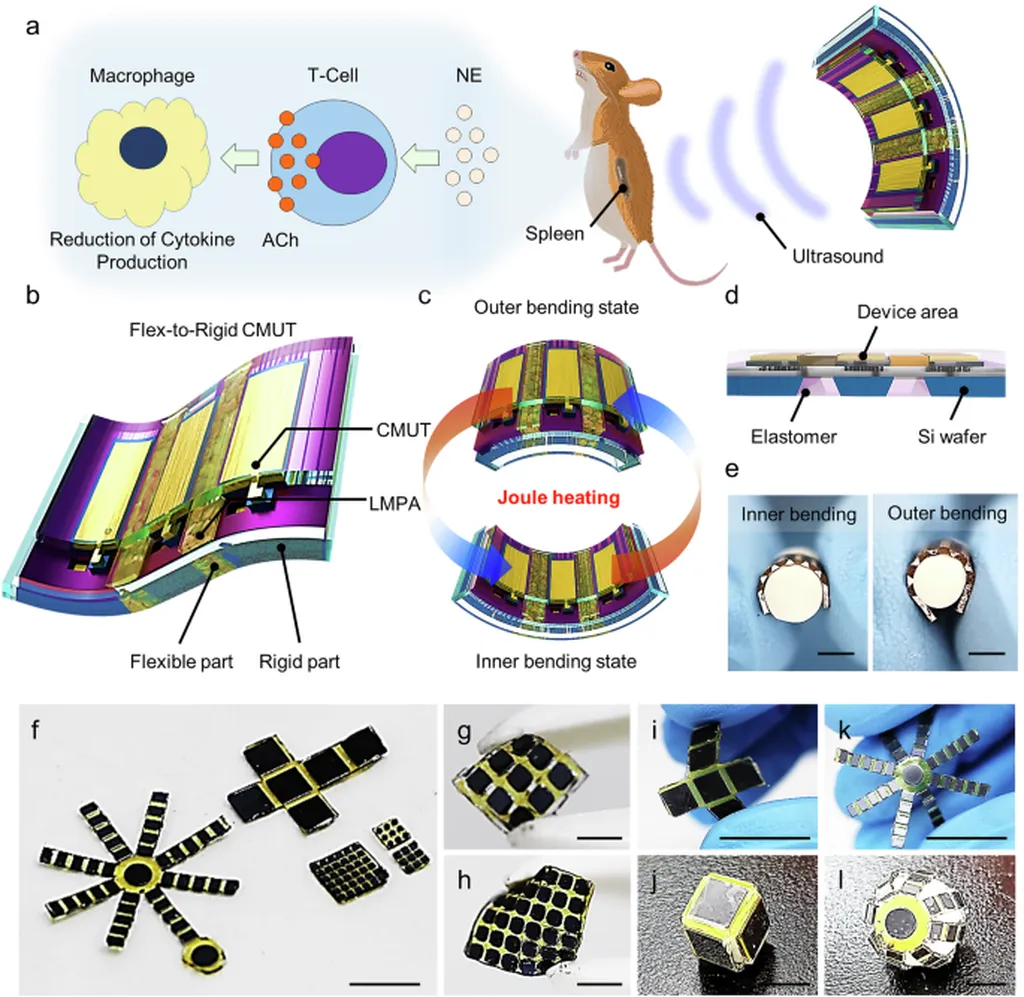In a groundbreaking development poised to reshape medical treatments, researchers have introduced a novel flexible ultrasound transducer array with statically adjustable curvature, offering a promising avenue for anti-inflammatory therapies. This innovation, detailed in a recent study published in the journal *npj Flexible Electronics* (which translates to “Flexible Electronics”), could revolutionize how we approach long-term, continuous medical care.
At the helm of this research is Sang-Mok Lee, a distinguished researcher from the School of Electrical Engineering at the Korea Advanced Institute of Science and Technology (KAIST). Lee and his team have tackled a significant challenge in the field of wearable ultrasound technology: the lack of control over transducer curvature and the limitations imposed by manual manufacturing processes.
“Our goal was to create a flexible ultrasound transducer that could adapt to the contours of the body and provide consistent, high-quality treatment over extended periods,” Lee explained. The team achieved this by employing a hybrid wafer-scale microfabrication process, which not only enhances throughput but also expands the design space for future innovations.
The transducer’s performance is impressive, with excellent electrical and acoustic characteristics at center frequencies of 1.5 MHz and 3.4 MHz in immersion. To demonstrate its therapeutic potential, the researchers administered ultrasound treatment to the spleens of mice with arthritis over a two-week period. The results were promising, with continuous measurements of ankle swelling and gait analysis confirming the efficacy of the treatment.
“This research opens up new possibilities for wearable medical devices that can provide continuous, hands-free treatment,” Lee noted. “The potential applications extend beyond arthritis to a wide range of inflammatory conditions, offering patients a more convenient and effective treatment option.”
The implications for the medical field are profound. Wearable ultrasound patches could become a standard tool in the fight against inflammatory diseases, providing continuous, non-invasive treatment that improves patient outcomes and quality of life. The commercial impact is also significant, with opportunities for companies to develop and market these advanced wearable devices.
As the research continues to evolve, we can expect to see further advancements in the design and functionality of flexible ultrasound transducers. The work by Lee and his team represents a crucial step forward in this exciting field, paving the way for a future where wearable technology plays a central role in medical treatment and patient care.

